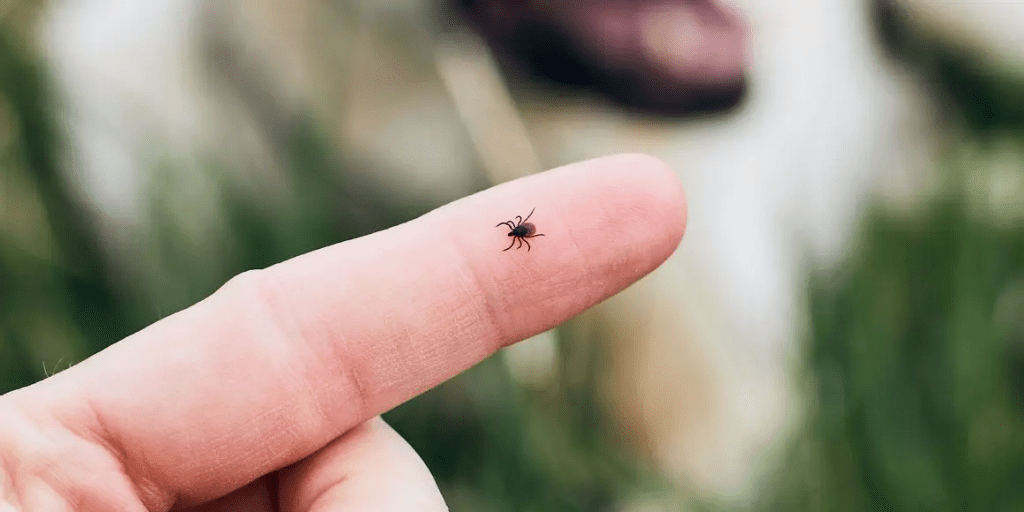Spending time outdoors in the warmer months can be incredibly refreshing, but it also comes with the risk of encountering ticks. Ticks can transmit serious diseases, such as Lyme disease, which makes it essential to recognize a tick bite and respond promptly. This article will walk you through how to identify a tick bite and what immediate steps you should take to protect your health.
Why You Need to Be Aware of Tick Bites

Ticks are more than just a nuisance; they can carry harmful bacteria and viruses that can lead to long-term health complications. A tick bite might seem insignificant, but it can escalate into serious conditions if not addressed correctly. Whether you spend time hiking, gardening, or simply enjoying your backyard, it’s vital to know the signs of a tick bite and how to respond.
How to Identify a Tick Bite
Recognizing a tick bite can sometimes be tricky, especially since ticks can be small and their bites are often painless. However, there are several telltale signs that can help you identify whether you’ve been bitten by a tick.
1. Visible Tick
The most straightforward way to identify a tick bite is by seeing the tick itself. Ticks can vary in size depending on the species and how long they’ve been feeding. Some ticks are as small as a poppy seed, making them difficult to detect. Be sure to check commonly missed areas like your scalp, behind your ears, and in your armpits, where ticks love to hide.
2. Red Spot
A tick bite often leaves behind a small red bump on the skin, similar to a mosquito bite. If the tick remains attached for an extended period, the bite site may become larger and more inflamed. This spot is an early indication that you may need to act.
3. Bull’s-eye Rash
One of the more serious signs of a tick bite is the appearance of a bull’s-eye rash, which can signal a Lyme disease infection. This rash typically develops within 3 to 30 days after the tick bite and is characterized by a red, circular rash that spreads outward while the center remains clear. Not everyone with Lyme disease will develop this rash, but if you do, it’s a major red flag.
4. Itching or Burning
Some people experience mild itching or a burning sensation at the site of the tick bite. While not as common as a red spot or rash, it’s worth noting if the bite area feels different than usual insect bites.
5. Flu-like Symptoms
If a tick bite leads to infection, you might begin to experience flu-like symptoms such as fever, chills, fatigue, or muscle aches. These symptoms can indicate that the tick has transmitted a disease like Lyme or anaplasmosis, both of which require medical treatment.
What to Do Immediately After a Tick Bite

Once you’ve identified a tick bite, it’s crucial to act quickly to minimize potential risks. Here’s a step-by-step guide on what to do right away:
1. Remove the Tick
The most important action to take is to remove the tick as soon as possible. Use fine-tipped tweezers to grab the tick as close to your skin as possible. Pull upward with steady, even pressure. Avoid twisting or jerking the tick, as this can cause its mouth-parts to break off and remain in your skin, which can lead to infection.
2. Clean the Area
After the tick is removed, clean the bite site thoroughly with rubbing alcohol, iodine scrub, or soap and water. This helps reduce the risk of infection and ensures that no remnants of the tick or bacteria remain on your skin.
3. Dispose of the Tick Safely
You don’t want the tick to cause any further harm, so dispose of it properly. Place the tick in a sealed bag or container, wrap it tightly in tape, or flush it down the toilet. Never crush a tick with your fingers, as this can expose you to pathogens carried by the tick.
4. Monitor for Symptoms
Keep a close eye on the bite area and your overall health in the days and weeks following the bite. Watch for any signs of a rash, increased redness, or flu-like symptoms. Some tick-borne diseases can take time to manifest, so being vigilant about changes in your body is key.
5. Consult a Doctor

If you’re unable to remove the tick, or if you develop symptoms such as a rash, fever, or muscle aches, contact a healthcare provider immediately. Early intervention can prevent serious complications. In cases of Lyme disease, for example, doctors can prescribe antibiotics that are highly effective if taken in the early stages of the infection.
Preventing Tick Bites in the First Place
While knowing how to identify and respond to a tick bite is crucial, prevention is always better than cure. Here are a few ways you can minimize your risk of being bitten by a tick:
- Wear Protective Clothing: When walking in wooded or grassy areas, wear long sleeves, long pants, and tuck your pants into your socks to prevent ticks from reaching your skin.
- Use Tick Repellent: Apply insect repellents that contain DEET or permethrin to your skin and clothing, especially when spending time outdoors in tick-prone areas.
- Check Yourself Regularly: After spending time outdoors, thoroughly check your body for ticks, paying close attention to hidden areas such as your scalp, behind your ears, and between your toes.
- Keep Outdoor Spaces Tidy: Ticks thrive in tall grass and wooded areas. Keeping your yard well-maintained by mowing the lawn, trimming bushes, and removing leaf litter can help reduce tick habitats.
Conclusion: Stay Safe and Stay Prepared
Ticks may be small, but they can have a significant impact on your health if not dealt with properly. Knowing how to identify a tick bite and what steps to take immediately can help you avoid the potential dangers associated with these parasites. By staying vigilant, acting quickly, and following up with a healthcare provider if necessary, you can ensure that you and your loved ones stay safe while enjoying the great outdoors.
Now that you’re prepared, feel free to share this knowledge with friends and family, and always be on the lookout for more health tips to keep yourself protected!


